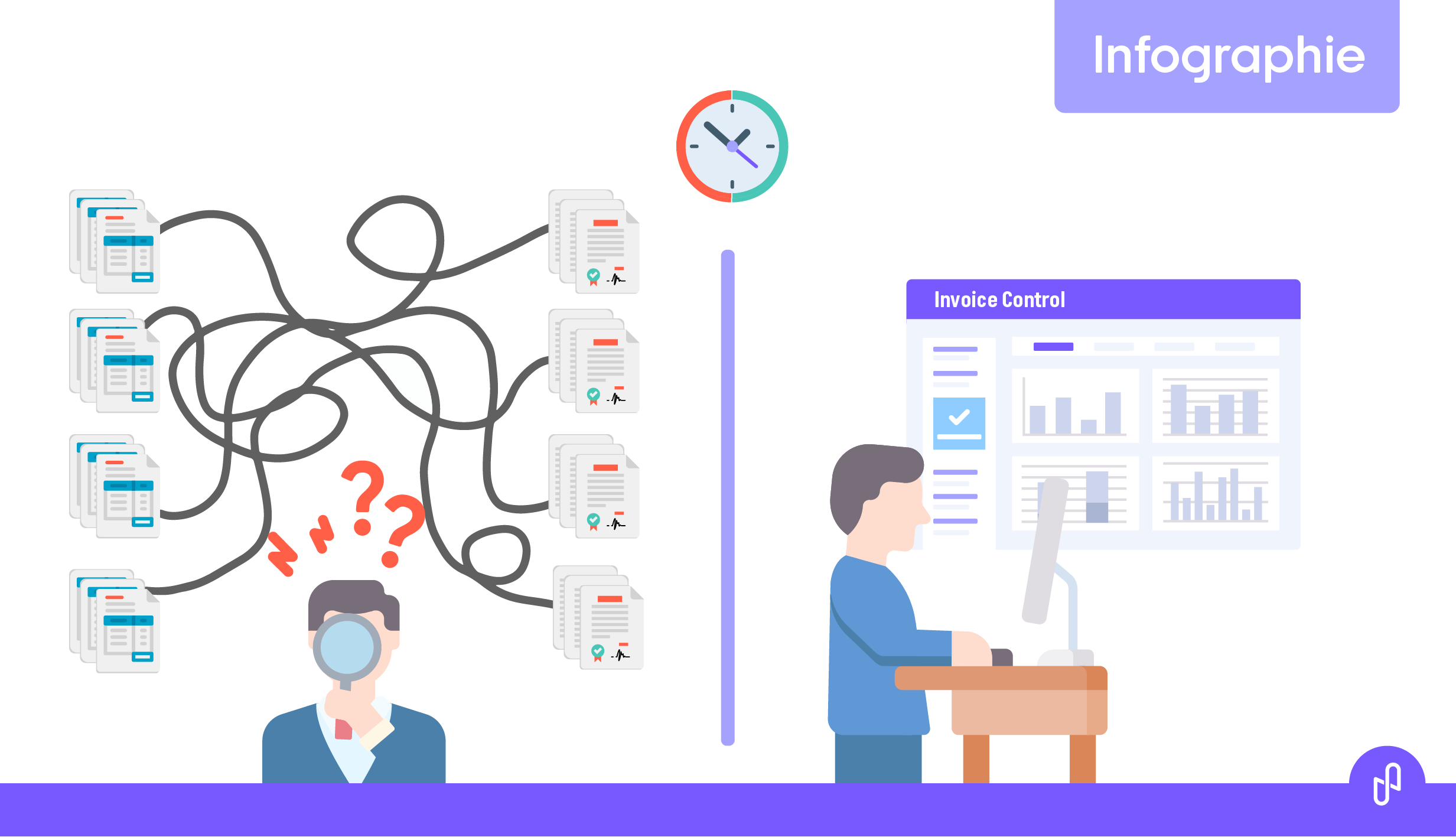
Transport invoice auditing is one of the most effective ways to reduce logistics costs. But for it to work, it needs to be complete, accurate, and ideally automated. That’s where modern Freight Audit & Payment solutions come in—they simplify the process and boost reliability.
Poor visibility leads to higher transport costs
When companies don’t have a clear, consolidated view of their transport spending, it becomes easy to misjudge costs and let them drift over time. Issues can go unnoticed and continue for months or even years.
Companies need the right tools to track and control freight costs with accuracy and consistency. Many already use TMS (Transport Management Systems), which often include features for checking transport invoices. This shows a clear intention to improve cost control through digitalization.
But as the transport world becomes more complex—with fast-changing rates, more carriers, and huge amounts of data—TMS alone aren’t enough. Managing rates, checking if charges match the contract, identifying errors, and handling credit notes all require decicated expertise.
That’s why using only a TMS can make it hard to fully control transport invoices or get a complete, reliable picture of overall transport expenses.

Beyond TMS: turning data into insights
New digital solutions now go beyond the TMS. They turn transport data into clear, interactive dashboards that help monitor spending and make better decisions. These tools remove the complexity of invoice management and let supply chain teams focus on what really matters: reducing transport costs.
Let’s see how.
How to implement a transport invoice control solution?
Deploying a transport invoice control solution starts with data collection and processing:
- Invoices
- Price lists
- Shipment files
- Transport orders
- Contracts
- Terms and conditions
All data is collected and centralized in a single repository, where it can be processed. This can take several forms, depending on the level of digital maturity:
- If the data is already digital, it can be transferred via EDI (Electronic Data Interchange) and automatically sent to the invoice control platform.
- If the data isn’t directly available through EDI (think of Excel, PDF, text files…), it needs to be manually processed before it can be used.
During this parameterization phase, the data is cleaned, standardized and homogenized to create a clean, reliable database. It is also during this stage that they are validated: The details of each delivery service, in all its specificities, are reviewed in collaboration with the company and its carriers, and are parameterized to define the precise invoicing rules that will govern the control of transport expenditure.
This is where invoice verification plays a major role, linking data together to automatically identify any discrepancies between the services invoiced and those actually provided, as stipulated in the contract.
In this setup phase, data is cleaned, standardized, and organized to create a reliable database. It is now ready to be checked and validated. Each transport order is reviewed in detail with the company and its carriers to define the exact billing rules that will be used to verify invoices.
There, invoice verification is key. By connecting all the data, the system can automatically spot errors—like services charged but not delivered, or pricing mismatches.
Let’s take an example: duplicate transport orders.
If a customer places two orders close together, the carrier might issue two separate invoices for deliveries going to the same place on the same day. These duplicates often go unnoticed and are very costly. But with consolidated delivery data, they can easily be spotted and corrected. It’s just one example. Costs, overcharges, flow breakdowns… With the right tool, all key metrics and anomalies can be visualized in a couple of clicks.
Benefits across the entire company.
The first and most immediate benefit is the return on investment—companies can save up to 5% on their transport costs within just a few months.
But the value goes much further. Once the data is cleaned and made usable, it supports better decisions at every level of the organization:
- For top management, it helps with strategic choices like contract negotiations, tenders, or network design. With reliable, easy-to-access data, decision-makers gain a full view of market trends and can respond quickly to changes.
- For managers, clear and dynamic dashboards make it easier to track spending, identify deviations, and ensure pricing rules are respected. Performance indicators are readily available, making it simpler to monitor team results and highlight both individual and group achievements.
- For operations, some solutions include collaborative tools to manage credit notes. These platforms allow both shippers and carriers to work from the same data: the shipper flags errors, which the carrier can confirm or deny, and issue a credit note if needed. With shared access to the same information, communication becomes faster and smoother for everyone involved.
A consolidated view of transport costs, available on demand.
The value of an invoice control solution lies in its reporting and visualization tools. All data is made accessible and intelligible, offering a consolidated and reliable view of all transport expenses, and automatically identifying any billing anomalies.
With this visibility, teams can focus on what matters: setting the right priorities and acting on concrete plans to reduce costs.
In short, a transport invoice control solution brings clear value—both through quick, measurable savings and better agility in day-to-day operations and long-term strategy. With powerful features and reliable data, companies can analyze their transport activity in detail and take action to improve performance and control spending.





